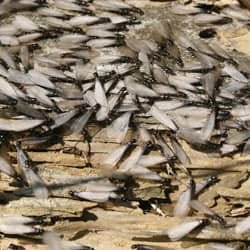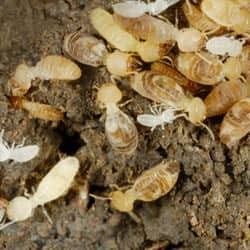Have you ever come home, stepped out of your car, and noticed a mass of crawling, winged insects on your windowsills or foundation walls? Would you be able to tell if that mass of insects was a swarm of flying ants or termite swarmers? In case you don’t know the difference, this article will explain how to identify termite swarmers, the damages termites cause, and what you can do if you discover your structure has been infested by termites.
A termite colony, when it matures, will send out what are called alates, or termite swarmers, to start new colonies. These swarmers only appear briefly, for around a half an hour, a couple of times a year, so they are easily missed. If you see termite swarmers, be aware that there is certainly a mature colony somewhere nearby. And, if that place happens to be your home, you need to take action before damages go beyond repair.
Visually identifying termite swarmers is very important, since termites cost United States property owners billions of dollars each year. First, when looking at a swarmer, look at the four wings. If they stack evenly on top of one another, you are looking at a termite. Termite wings are white, whereas the wings on a carpenter ant swarmer are tan. Also, notice if the wings go beyond the abdomen. If they are only slightly longer, you are looking at an ant. If the wings go far beyond the abdomen, this is a termite. And termite swarmers are much smaller than ants, measuring around 3/8 of an inch long while ant swarmers can be 5/8 of an inch. Two other ways to tell termite swarmers are that they have antennae that are mostly straight, and they have a distinct pinch between their thorax and abdomen.
Damages Done By Termites
Termites can do damage to a structure for years without being detected, damage that looks like long grooves stacked on top of each other inside wood. This causes the wood to have a tattered look, almost like stacked cardboard edges. When termites feed on wood, it becomes brittle and hollow. But you are unlikely to see this unless you are doing renovations. If you break off a piece of wood and it feels light, it could have been eaten by termites. Similarly, if you tap on a support beam and it sounds hollow, this is another good indication.
Secondary damages of termites include peeling wallpaper, bulging walls, sagging floors and ceilings and windows and doors that don’t open or close properly.
If you see termite swarmers, or are noticing the signs termites leave behind, Russel’s Pest Control is here to help. For more information, or to schedule termite service, reach out to us today.

